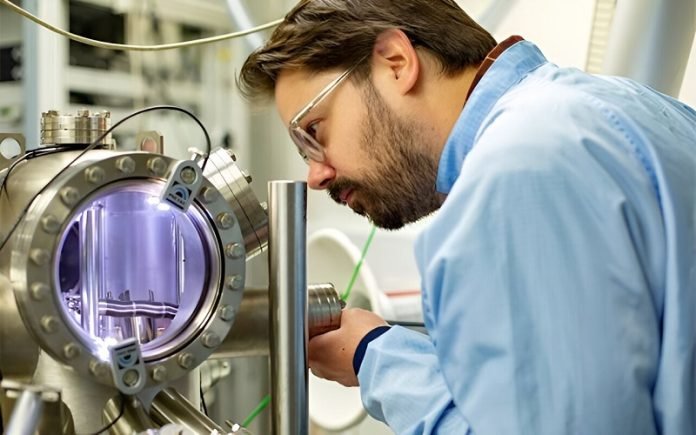
Imagine a computer so powerful it could solve the world’s most complex problems in a blink of an eye.
This isn’t just a dream anymore, thanks to breakthrough research from engineers and physicists at UCL.
They’ve made a giant leap towards building a quantum computer, a type of supercomputer that operates on the principles of quantum mechanics, the fundamental laws of nature that rule the universe.
Published in the journal Advanced Materials, their study reveals a new way to build these quantum computers with almost no mistakes.
For the first time in 25 years, scientists have managed to place single atoms with nearly 100% accuracy.
This is crucial because these atoms are used to create qubits, the building blocks of a quantum computer.
Unlike today’s computers, which process information in binary (1s and 0s), quantum computers use qubits that can represent and process a vast amount of data simultaneously.
This is thanks to two quantum phenomena: superposition, where qubits can be in multiple states at once, and entanglement, where qubits can be instantly connected no matter how far apart they are.
These abilities could enable quantum computers to tackle problems too complex for current supercomputers, potentially revolutionizing fields like medicine, finance, and security.
Currently, there are various methods being explored to build a quantum computer, but they all face challenges in scaling up and keeping error rates low.
The UCL team’s method involves positioning individual arsenic atoms into silicon crystals. Silicon is the material used in conventional computer chips, and arsenic is also familiar to the semiconductor industry, making this approach highly compatible with existing technology.
Previous attempts used phosphorus atoms, but they could only be placed correctly 70% of the time.
By switching to arsenic, the team achieved a near-zero failure rate.
Dr. Taylor Stock, the lead author, mentioned they’ve been able to place atoms with 97% accuracy and are optimistic about reaching 100% soon.
However, there’s a catch. Right now, placing these atoms is a manual, time-consuming process, akin to using a needle to insert each atom individually.
To build a quantum computer with millions or even billions of qubits, this process needs to be automated and sped up.
Despite the challenge, the potential rewards are immense. Quantum computing could significantly advance many industries and research fields.
The silicon semiconductor industry, worth about $550 billion, could play a crucial role in making quantum computing a reality due to its experience with silicon and arsenic.
Professor Neil Curson, a senior author of the study, believes they’ve reached a significant milestone.
For the first time, they’ve shown a way to achieve the necessary accuracy and scalability for quantum computing.
The next steps involve a lot of engineering work to speed up and automate the process, but Curson is confident that a universal quantum computer can be built.
This breakthrough marks a new era in computing, bringing us closer to unlocking the full potential of quantum mechanics.




